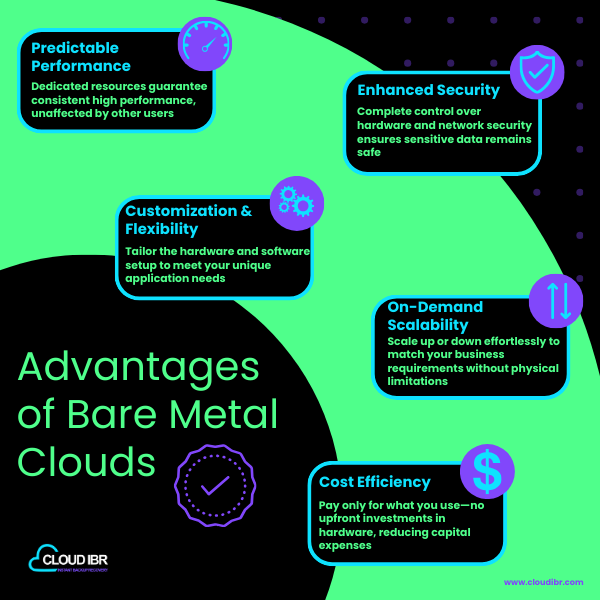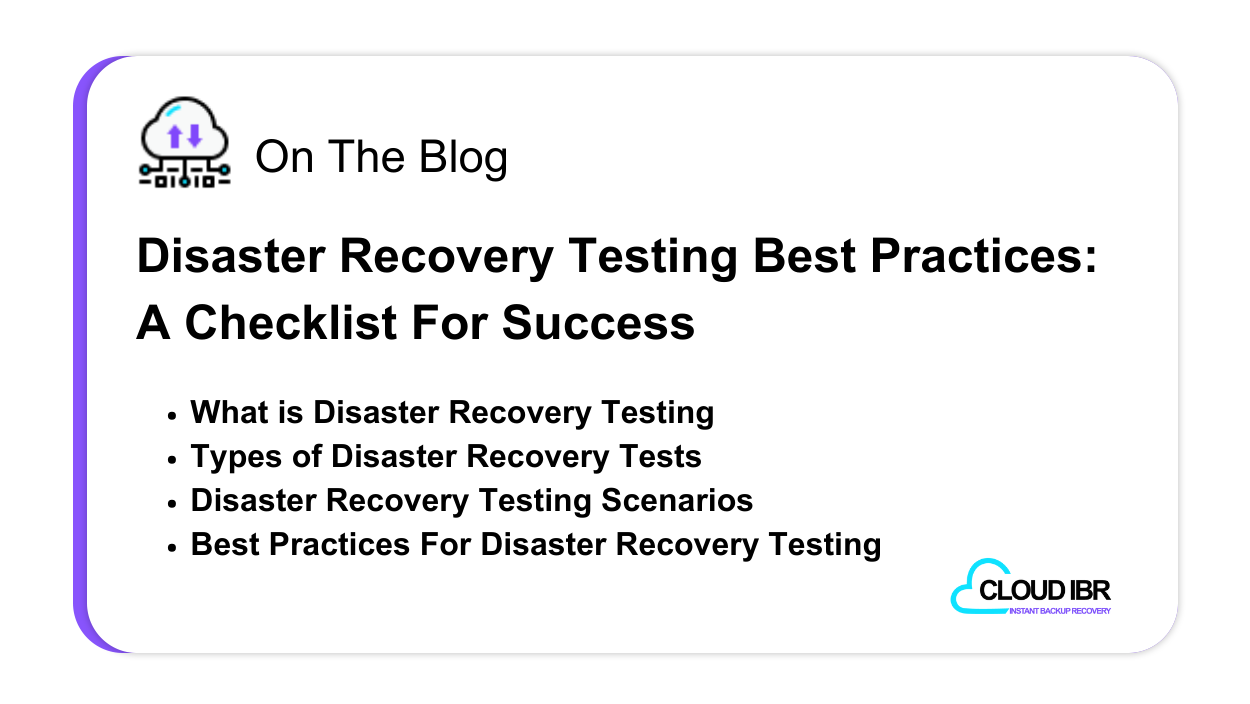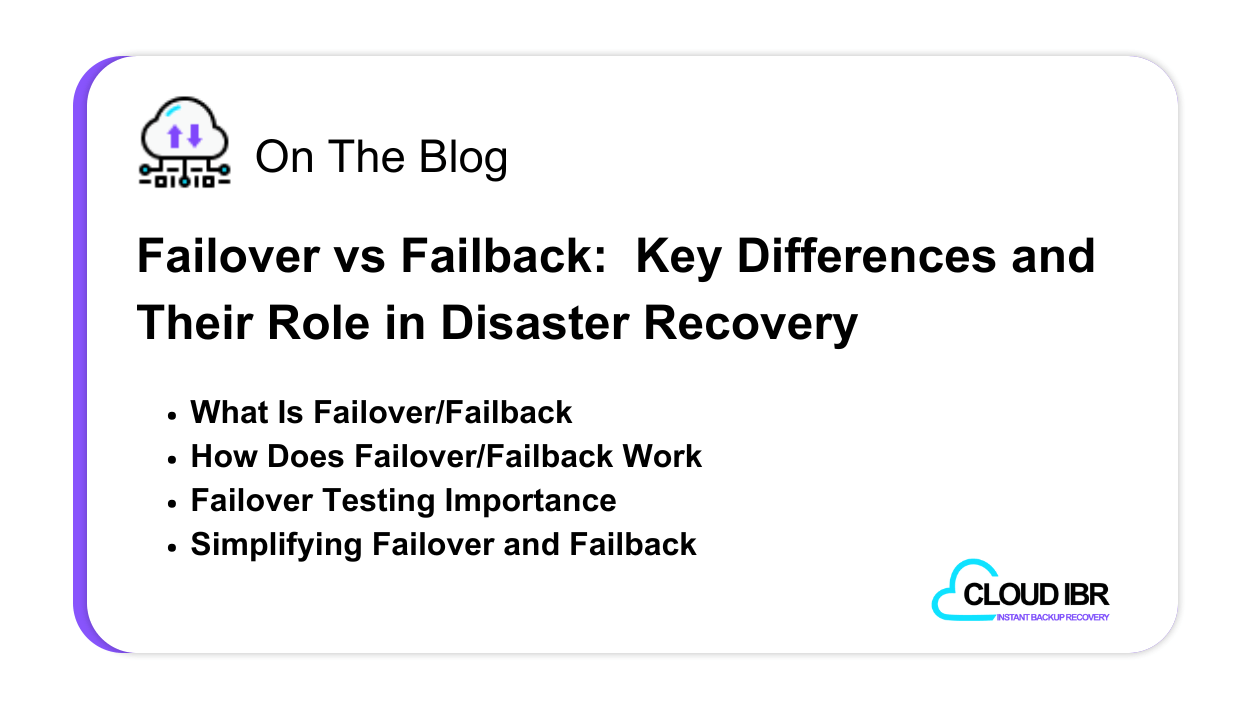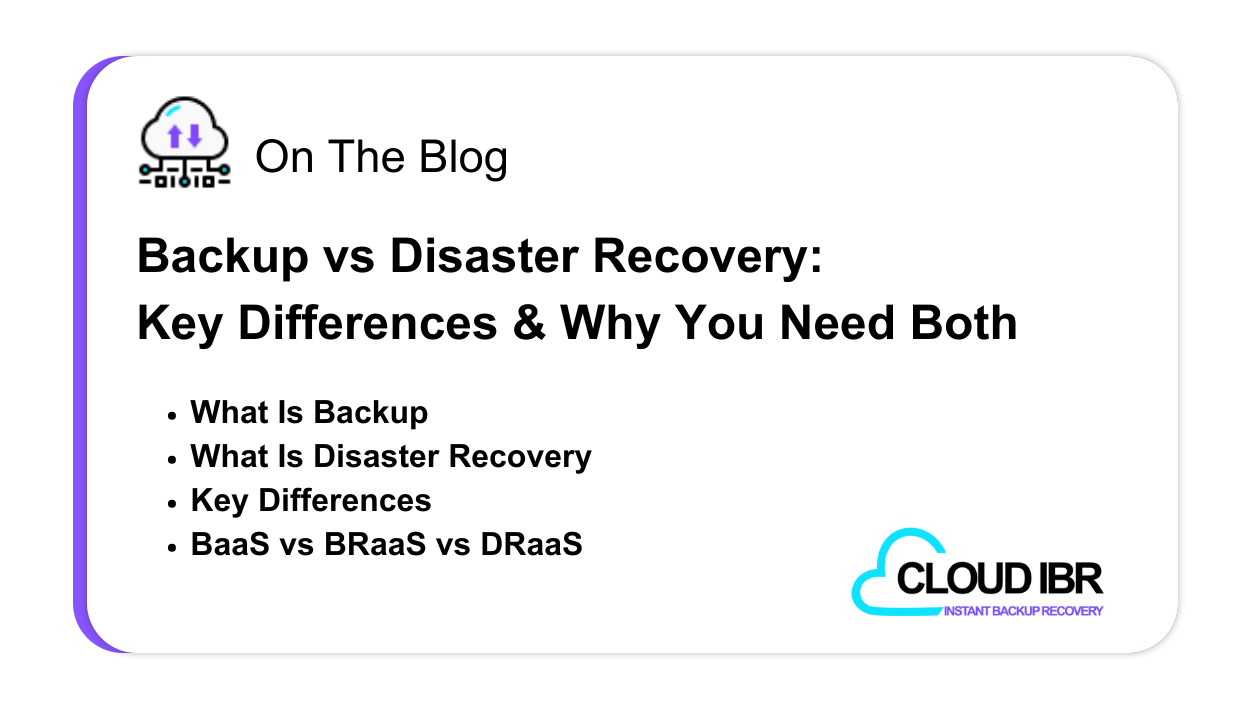Businesses need high-performance computing, stronger security and flexible infrastructure. While conventional cloud services offer scalability they often lack the raw power and control necessary for the demanding workloads of mission-critical applications.
Bare metal servers are the foundation of high-performance computing, delivering unparalleled raw power and control. They meet business needs by delivering the dedicated performance of physical hardware combined with the flexibility and scalability of the cloud. In this article, we’ll break down what bare metal means, how bare metal clouds work and why they are now the preferred choice for companies seeking powerful, secure and dependable infrastructure. And it doesn’t end there. Bare metal cloud also plays a critical role in disaster recovery, ensuring business continuity in the face of unexpected events
What Does ‘Bare Metal’ Mean?
Bare metal servers are dedicated physical machines without any pre-installed software, giving you complete control over the hardware. With no shared resources, all the server’s processing power is available to a single tenant, ensuring maximum performance.
What is a Bare Metal Cloud?
A bare metal cloud is a cloud computing service where users rent dedicated physical servers without virtualization. Virtualization typically refers to using software, called a hypervisor, to create multiple virtual machines (VMs) on a single physical server, allowing resources to be shared among different users or applications. In contrast, a bare metal cloud server dedicates all of its resources — like CPU, memory and storage — to a single tenant, without the performance overhead caused by virtualization.
This setup provides full control, predictability and customizability of dedicated hardware while leveraging the scalability and performance of cloud infrastructure. Users can configure the server to their specific needs, ensuring consistent, high-performance results without the limitations of shared resources.
Now that we understand what each is, let’s explore the key differences between a bare metal server and a bare metal cloud server to understand which option is better suited for specific business needs.
Bare Metal vs Bare Metal Cloud
While both bare metal servers and bare metal cloud servers offer dedicated physical hardware, there are key differences in how they are managed and implemented.
Scalability
Traditional bare metal servers are limited by physical hardware, meaning scaling up requires purchasing additional infrastructure. In contrast, bare metal cloud servers offer on-demand scalability, allowing businesses to quickly provision additional servers as needed through a cloud provider’s interface.
Management
Bare metal servers require the organization to handle all aspects of hardware management, including maintenance and upgrades. Bare metal cloud servers are managed by the provider, removing the need for businesses to maintain physical infrastructure and allowing teams to focus on their core operations.
Performance
Both solutions provide high-performance computing. However, bare metal cloud servers offer faster provisioning and easier access through cloud-based management portals. Additionally, the absence of hypervisor overhead in bare metal clouds ensures higher performance and lower latency compared to virtualized environments.
Cost
With traditional bare metal servers, organizations bear the full cost of hardware ownership and maintenance. Bare metal cloud servers use flexible pay-per-use models, eliminating the need for capital investment and allowing businesses to scale their infrastructure as needed.
How Do Bare Metal Clouds Work
Bare metal clouds provide direct access to dedicated physical servers without the need for virtualization. Here’s a look at how they work:
- Rent dedicated hardware: Users lease single-tenant servers, ensuring exclusive access to all resources.
- Install Operating System and Applications: Without a virtualization layer, users install their OS and applications directly to the physical hardware.
- Manage Through Cloud Interface: Full control is granted via a web portal, API or CLI, allowing seamless configuration and monitoring.
- Scale Resources On-Demand: Easily adjust server resources as business demands fluctuate without manual provisioning.
- Integrate with Cloud Services: Bare metal servers connect with additional cloud services for enhanced flexibility and performance.
Advantages of Bare Metal Clouds

Predictable Performance
Bare metal cloud infrastructure offers predictable performance since all resources are dedicated to a single tenant. This eliminates the variability caused by resource-sharing in virtualized environments.
Enhanced Security
With dedicated physical hardware, businesses can maintain full control over system and network security.
Flexibility
Users can fully customize bare metal cloud servers to meet their specific operating system and software stack requirements, ensuring optimal performance for their applications.
On-Demand Scalability
Bare metal cloud services are designed to scale quickly and efficiently, supporting a wide range of applications without the need for physical hardware adjustments.
Cost-Efficiency
Bare metal cloud services operate on a pay-per-use model, allowing businesses to scale infrastructure as needed without overbuying or maintaining unused hardware.
What Is Bare Metal Recovery?
Bare metal cloud infrastructure is a critical component of disaster recovery strategies. One of its most important uses is bare metal recovery (BMR), which allows businesses to fully restore their systems — including the operating system, applications and settings — onto a bare metal machine following a disaster. This ensures operations can be quickly resumed with minimal downtime.
Let’s dive deeper into what bare metal recovery is and how it works.
Bare Metal Recovery Defined
Bare metal recovery refers to the process of restoring a complete system — operating system, applications, settings and data — onto a bare metal machine that has no pre-installed software.
How Does Bare Metal Recovery Work?
As long as your Veeam backup is stored through Backblaze B2, Wasabi Object Storage or another backup storage solution, here’s how the recovery process unfolds:
- Initiating the Recovery: Using the backup, the recovery process begins by selecting the specific system image. This is a complete snapshot of your system, including the operating system, applications and settings that need restoration.
- Provisioning a Bare Metal Server: A bare metal server is instantly deployed, ready to receive the system image. This server is fully dedicated to the recovery process and ensures optimal performance for the restored environment.
- Restoring the Backup: The stored backup, including the operating system, applications and configurations, is restored onto the bare metal server. This brings the server back to its previous state, allowing all applications and systems to function as they did before the disruption.
- Seamless Recovery: Once the restoration is complete, the bare metal server is fully operational. This allows businesses to resume their operations without the need for extensive manual reconfiguration or setup.
- Ongoing Monitoring and Testing: Regular automated disaster recovery tests ensure that the backup remains intact and that future recoveries are possible. These tests also help businesses meet disaster recovery compliance requirements, ensuring they are prepared for audits and regulations.
Cloud IBR’s One-Click Bare Metal Backup Recovery
Cloud IBR simplifies DR by offering fully automated, one-click bare metal recovery in a cloud environment.
Here’s how it works:
- One-Click Deployment: Bare metal cloud servers are deployed instantly during a failover event.
- Automated Backup Import: Recovers Veeam backups stored in object storage or managed by Veeam Cloud Service Providers.
- Immediate Failover: Delivers a fully functional bare metal infrastructure environment with uninterrupted performance.
- Managed Failback (Platinum Plus): Synchronizes changes and transitions operations back to the production environment.
Ready to Simplify Your DR?
With Cloud IBR’s one-click recovery, you can safeguard your business without the complexity or cost of traditional DR solutions. Experience fast, flexible and fully automated recovery that gets you back online when it matters most. Book a demo today to see Cloud IBR in action and discover how easy it is to protect your business.
More From Our Blog

Best Practices For Disaster Recovery Testing
Updated: January 7th, 2025 Though data loss, and discontinuation of work due to IT failure, are costly, disaster recovery plans are still largely missing from many business operations. Even those

Failover vs. Failback: Key Differences & Their Role in Disaster Recovery
Businesses face a constant threat of unexpected disruptions. Whether it’s a natural disaster, cyberattack, or simple power outage, these events can bring operations to a standstill. Depending on the length

Backup vs Disaster Recovery: The Key Differences & Why You Need Both
Many organizations make a common mistake of confusing backups with disaster recovery (DR). Although they share the common goal of data protection, they serve distinct purposes. Regardless of how much
